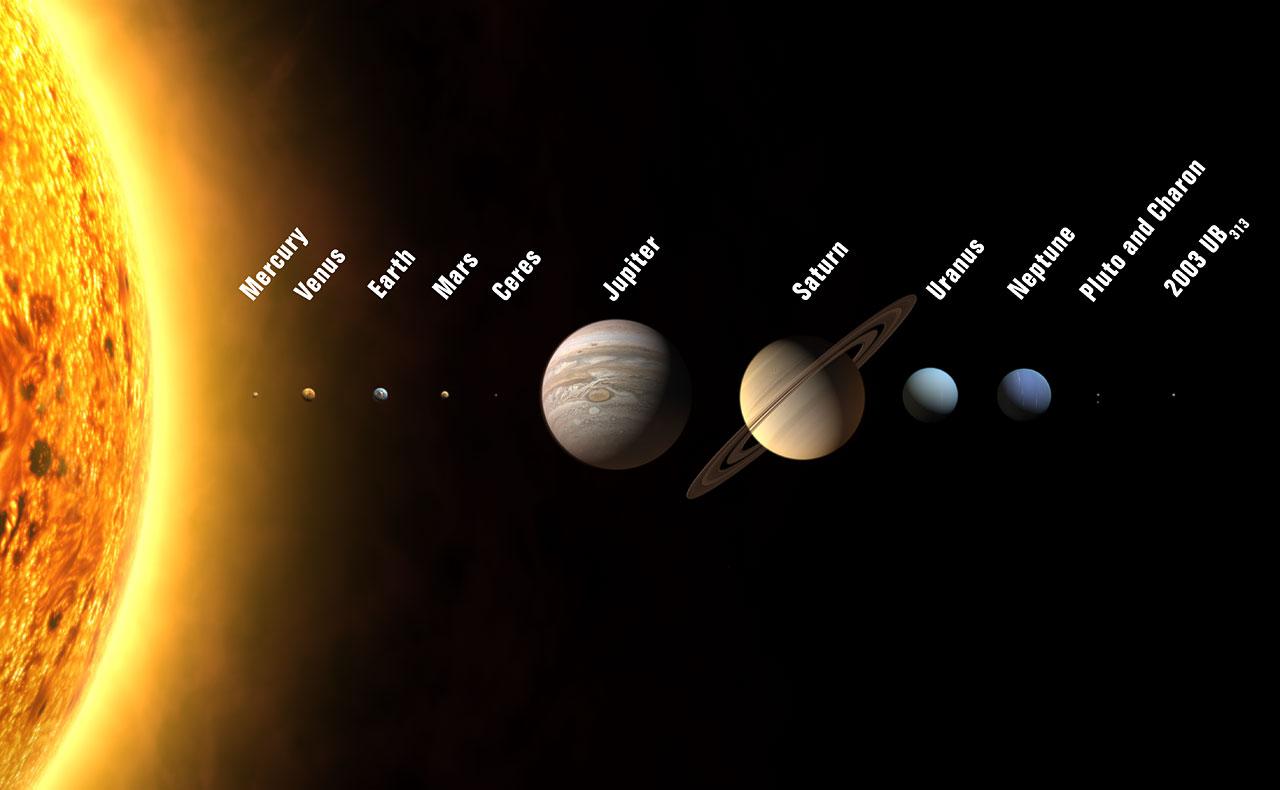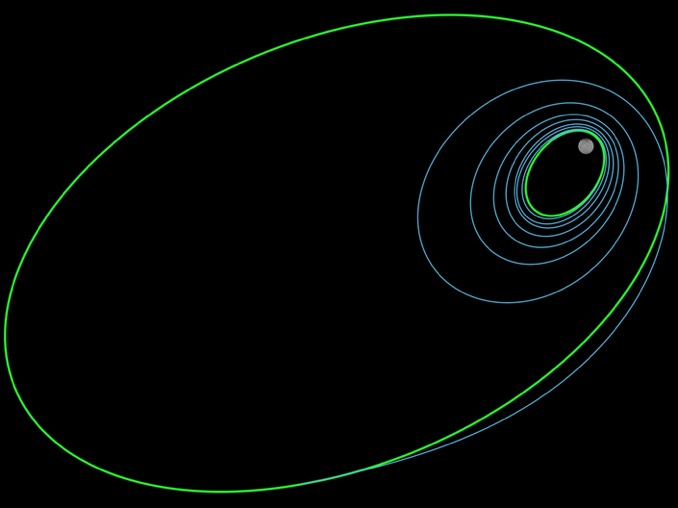In 2015, when Dawn went into orbit around Ceres, a dwarf planet that is also the largest world in the asteroid belt, the mission became the first to visit a dwarf planet and go into orbit around two destinations beyond Earth. NASA’s Dawn: Highlighting Bright Areas of Ceres. NASA's Dawn probe has reached its first science orbit at Ceres, marking the start of the spacecraft's serious scrutiny of the mysterious dwarf planet. Engineers operating the NASA’s Dawn spacecraft have initiated maneuvers that will bring the satellite to the lowest and final orbit over the planet Ceres.
- Ceres Facts
- Ceres Orbital Period Aphelion And Perihelion
- Dwarf Planet Ceres Image
- Ceres Orbit Around The Sun
- Ceres Orbit
The CERES team has been collecting ERB data since 1997, when the first CERES instrument was launched aboard the Tropical Rainfall Measuring Mission (TRMM) satellite. Since then, CERES instruments have launched aboard the Terra, Aqua, Suomi National Polar-orbiting Partnership (S-NPP) and NOAA-20 satellites. The CERES instruments provide direct measurements of reflected solar radiation and emission of thermal infrared radiation to space across all wavelengths between the ultraviolet and far-infrared.
CERES measurements, together with measurements from higher-resolution imagers on polar orbiting and geostationary satellites, are used along with other input data sources to produce data products that describe the ERB at the top-of-atmosphere, within the atmosphere and at the surface. The CERES data products capture variations in ERB at hourly, daily and monthly timescales and at spatial scales ranging from 20 km to global.
The CERES data are used by the climate, weather and applied science research communities to address a range of research topics that involve the exchange of energy between the Earth and space and between the major components of the Earth system.
CERES is the only project worldwide whose prime objective is to produce global climate data records of ERB from instruments designed to observe the ERB.
Dwarf Planet 1 Ceres is currently in the constellation of Pisces. The current Right Ascension of Dwarf Planet 1 Ceres is 01h 41m 26s and the Declination is +03° 12’ 05” (topocentric coordinates computed for the selected location: Greenwich, United Kingdom [change]). The current magnitude of Dwarf Planet 1 Ceres is 9.06 (JPL).
Summary of key facts about Dwarf Planet 1 Ceres [tip: you can also create a Quick Access page for this data if you access it frequently and would like to have a simpler view]:
- 1 Ceres isabove the horizon from Greenwich, United Kingdom [change].
- It is visible looking in the West-South-West direction at an altitude of 26° above the horizon.
- Given its current magnitude, 1 Ceres is visible with the help of a binocular with a 50mm aperture, easy with a small telescope.
- See also 1 Ceres rise and set times.
- Go to interactive sky chart
If you need to access this information frequently for your observations, you can create a simple customized Quick Access page, so that you can easily bookmark it in your browser favorites or add a shortcut to your mobile phones' home screen.
Additional information about Dwarf Planet 1 Ceres available on TheSkyLive:


- Position and finder charts (see also Where is Dwarf Planet 1 Ceres?)
- Distance from Earth (see also How far is Dwarf Planet 1 Ceres from Earth?)
- Rise and set times (see also When does Dwarf Planet 1 Ceres rise and set?)
- Brightness (see also How bright is Dwarf Planet 1 Ceres?)
- Orbital elements. Detailed information about Dwarf Planet 1 Ceres orbital parameters.
- Interactive orbit visualization. 3d visualization showing the orbit of Dwarf Planet 1 Ceres with respect to the major Solar System objects.
- Physical data. Detailed information about physical properties of Dwarf Planet 1 Ceres, such as mass and geometric properties.
- 15 days ephemerides. Table showing celestial coordinates and magnitude of Dwarf Planet 1 Ceres for the past and next 7 days.
- Interactive sky chart. An online planetarium application that shows where to locate Dwarf Planet 1 Ceres in the sky from your location.
- Live position tracker. A high precision sky chart that uses real deep sky imagery to help locate Dwarf Planet 1 Ceres with your telescope or on your astrophotographies.
Below we provide Dwarf Planet 1 Ceres finder charts showing where the object is right now in the sky with respect to the brightest stars. The first finder chart has a field of view of 50 degrees, while the second one has a field of view of 10 degrees. Click on each finder chart to access a full screen interactive Online Planetarium.

Field of view: 50x30 degrees
View fullscreen
Field of view: 10x6 degrees
View fullscreen
= binocular, brighter than 10th magnitude
Location: Greenwich, United Kingdom [change]
Higher precision deep sky finder chart, 60 arcmin wide, showing where Dwarf Planet 1 Ceres is right now. Click on the image to see a more detailed fullscreen tracker view.
Ceres Facts
Field of view: 60x40 arcmins
View fullscreen
Also check out Where is Dwarf Planet 1 Ceres?, a page that provides all the information needed to find Dwarf Planet 1 Ceres in the sky and additional links to sky charts.
The distance of Dwarf Planet 1 Ceres from Earth is currently 580,254,593 kilometers, equivalent to 3.878762 Astronomical Units. Light takes 32 minutes and 15.5210 seconds to travel from Dwarf Planet 1 Ceres and arrive to us.
The following chart shows the distance of Dwarf Planet 1 Ceres from Earth as a function of time. In the chart the distance data is measured in Astronomical Units and sampled with an interval of 1 day.
The value of the reported distance might be somewhat inaccurate around the times of closest approach for objects passing extremely close to Earth. The value of the distance of 1 Ceres from Earth is also available as a real time updated value in the Live Position and Data Tracker.
Between January 2013 and December 2100, the closest approach of Dwarf Planet 1 Ceres to Earth happens on Wed Feb 25 2032 at a distance of 1.584778 Astronomical Units, or 237,079,413 kilometers:
NOTE: values for the closest approach are computed with a sampling interval of 1 day.
The current visual magnitude of Dwarf Planet 1 Ceres is 9.06.
The following chart is the predicted light curve (visual magnitude as a function of time) of Dwarf Planet 1 Ceres, according to the most recent ephemerides data. Magnitude data is sampled with a 2 days interval and there might be inaccuracies for objects changing brightness very rapidly during the course of a few days. For comets there could be large discrepancies between the observed and predicted brightness because of their highly dynamic behaviour.
Location: Greenwich, United Kingdom [change]
Latitude: 51° 28’ 47” N
Longitude: 0° 00’ 00” E
Timezone: Europe/London
Today's Dwarf Planet 1 Ceres rise, transit and set times from Greenwich, United Kingdom [change] are the following (all times relative to the local timezone Europe/London):
The rise and set times are defined as the time at which the upper limb of Dwarf Planet 1 Ceres touches the horizon, considering the effect of the atmospheric refraction. As the atmospheric conditions cannot be modeled precisely the times reported here should be considered correct with an approximation of few minutes.
The following table lists the orbital elements of Dwarf Planet 1 Ceres at epoch 30 May 2020 00:00 UTC (JD: 2459000.5). Source: JPL Small-Body Database
| Element | Symbol | Value |
|---|---|---|
| Orbit eccentricity | e | 0.07755702 |
| Orbit inclination | i | 10.58862149° |
| Perihelion distance | q | 2.55300563 AU 381,924,206 km |
| Aphelion distance | Q | 2.98230808 AU 446,146,940 km |
| Semi-major axis | a | 2.76765685 AU 414,035,573 km |
| Orbital period | period | 4.6000 years 1,681.7707 days |
| Date of perihelion transit | Tp | 2018-May-01 23:56:05 2,458,240.4973 JD |
| Next perihelion transit | 2022-Dec-08 18:25 2,459,922.2680 JD | |
| Argument of perihelion | peri | 73.731670943288° |
| Longitude of the ascending node | node | 80.286986366296° |
| Mean anomaly | M | 162.68625168799° |
| Mean motion | n | 0.21406009°/day |
This 3d orbit diagram is a feature of our 3D Solar System Simulator and shows the orbit of Dwarf Planet 1 Ceres with respect of the Sun and the orbits of the major planets. The position of Dwarf Planet 1 Ceres and the planets along their orbits in this diagram accurately represents the current configuration of the objects in the Solar System. This is an experimental feature and it requires a WebGL enabled browser. Please provide us feedback!
Ceres Orbital Period Aphelion And Perihelion
View Dwarf Planet 1 Ceres in the 3D Solar System Simulator
Dwarf Planet Ceres Image
The following shows the known values of the most important physical parameters of Dwarf Planet 1 Ceres. Source: JPL Small-Body Database
| Physical Parameter | Value | Relative to Earth |
|---|---|---|
| Diameter | 952.4 km | 0.0747 |
| Sideral Rotation | 9.0742 hours | 0.3791 |
| Absolute Magnitude | 3.34 | |
| Geometric Albedo | 0.09 |
Ceres Orbit Around The Sun
The following table lists the ephemerides of Dwarf Planet 1 Ceres computed for the past and next 7 days, with a 24 hours interval. Click on each row of the table to locate Dwarf Planet 1 Ceres in our Online Planetarium at the chosen date.
Ceres Orbit

| Date | Right AscensionR.A. | DeclinationDec. | MagnitudeMag | Constellation |
|---|---|---|---|---|
| 2021 Apr 19 | 01h 31m 50s | +02° 11’ 06” | 9.01 | Cetus |
| 2021 Apr 21 | 01h 34m 44s | +02° 29’ 42” | 9.02 | Cetus |
| 2021 Apr 23 | 01h 37m 37s | +02° 48’ 11” | 9.04 | Pisces |
| 2021 Apr 25 | 01h 40m 32s | +03° 06’ 29” | 9.05 | Pisces |
| 2021 Apr 27 | 01h 43m 27s | +03° 24’ 39” | 9.07 | Pisces |
| 2021 Apr 29 | 01h 46m 22s | +03° 42’ 39” | 9.08 | Pisces |
| 2021 May 01 | 01h 49m 17s | +04° 00’ 32” | 9.10 | Pisces |




